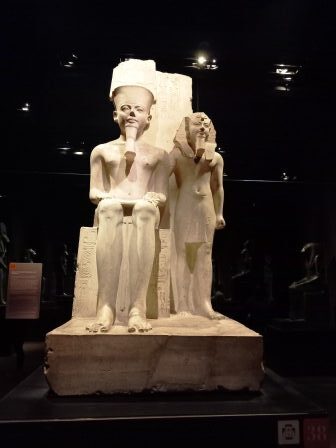MUSEO EGIZIO

Museo Egizio is recognized as the second most significant Egyptian museum globally, following the one in Cairo, thanks to the remarkable antiquities it houses. It ranks among the top eight most visited attractions in Italy, welcoming over 500,000 visitors each year.
The journey began in 1630 when King Charles Emmanuel I of Savoy made the first acquisition for what would become the museum: the Mensa Isiaca, an altar tablet crafted in the Egyptian style in Rome during the first century AD for the temple of Isis. In 1724, Victor Amadeus II of Savoy established the Museum of the Royal University of Turin adjacent to the university building on via Po and contributed a small collection of antiquities from across Piedmont.
A few decades later, another King Charles, Emmanuel III, sought to expand the museum's collection. He commissioned a botany professor and dedicated Egyptologist, Vitaliano Donati from Padua, to embark on a journey to the East. Donati was tasked with acquiring ancient Egyptian artifacts, mummies, and manuscripts to enhance the significance of the Mensa Isiaca. The items Donati collected arrived in Turin in 1759 and were housed in the University Museum.
The Royal Museum of Egyptian Antiquities was officially founded in 1824 when Charles Felix of Savoy purchased an extensive collection of Egyptian artifacts from Bernardino Drovetti, a French consul in Egypt and friend of the Egyptian viceroy, Mohamed Ali. Drovetti sold over 5,000 items, including 100 statues, 170 papyri, sarcophagi, mummies, and more. Once in Turin, this collection was placed in the Academy of Sciences building, designed by Guarino Guarini, known for his work on The Holy Shroud Chapel and the Church of San Lorenzo in Turin. Additionally, the university's collection was moved to the Academy building.
Today, Museo Egizio boasts an impressive collection of over 30,000 artifacts spanning from the Paleolithic era to the Coptic period. Among its most notable exhibits are the tomb of Kha and Meryt (the Theban Tomb), the temple of Tuthmosi III, the Papyrus of Turin (or Turin King List), and the Mensa Isiaca, among others.
In April 2015, the museum reopened after three years of renovations, now offering visitors a more engaging and accessible experience.